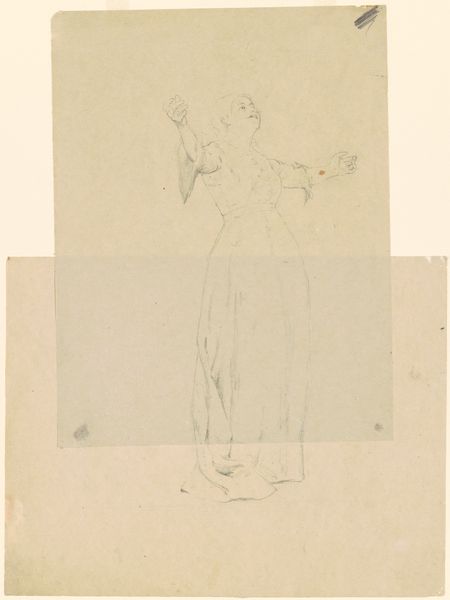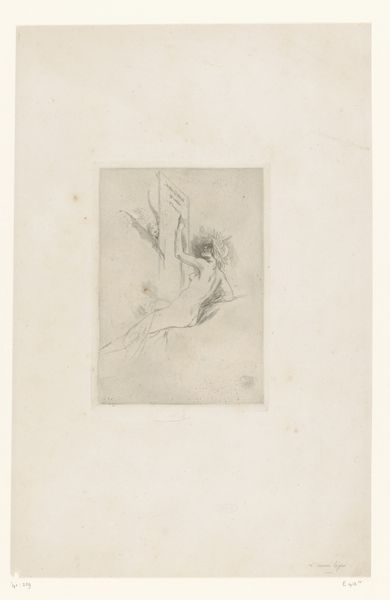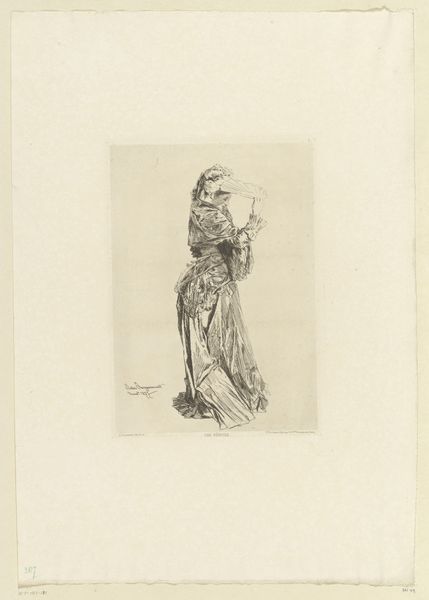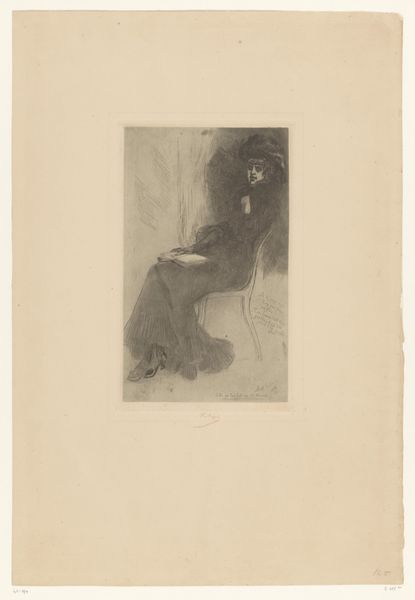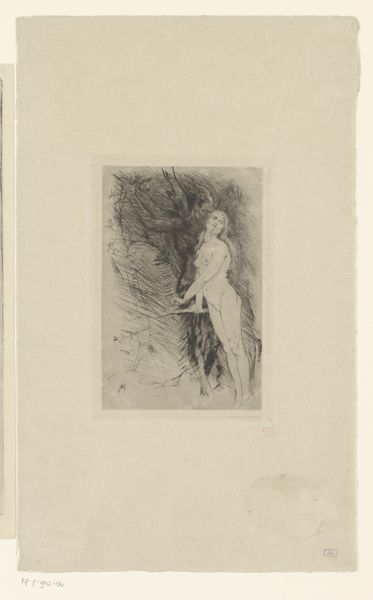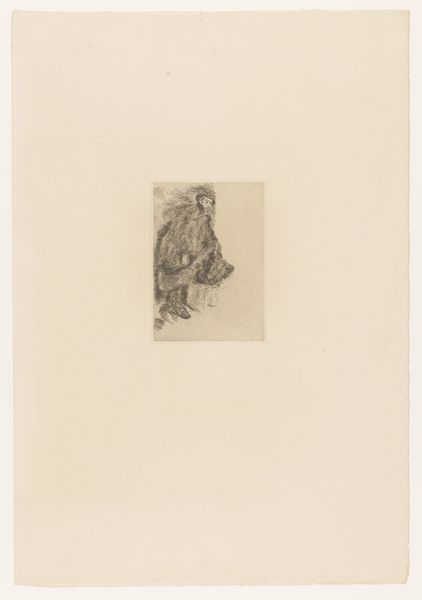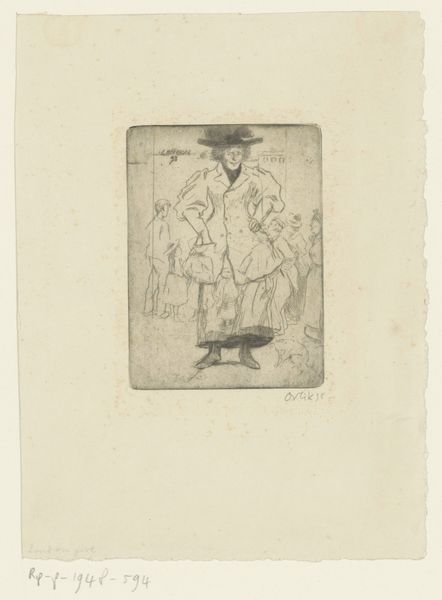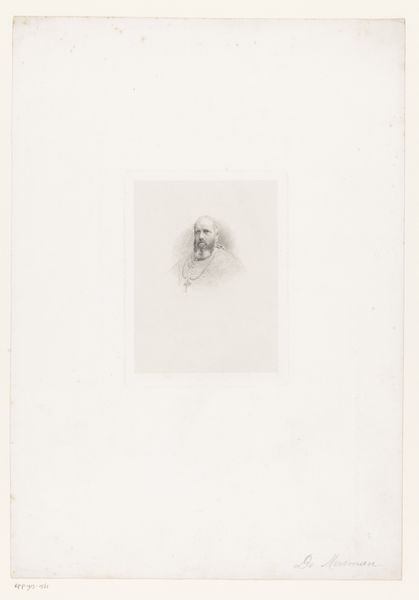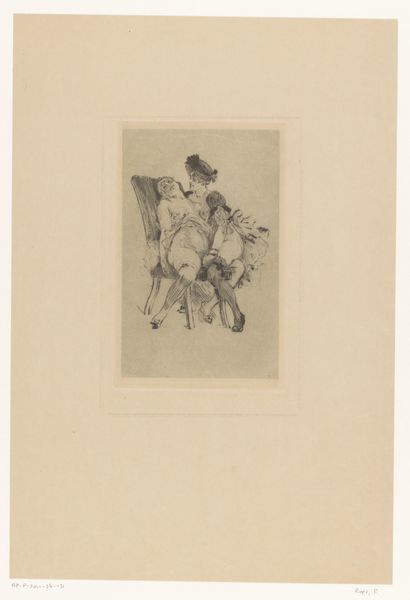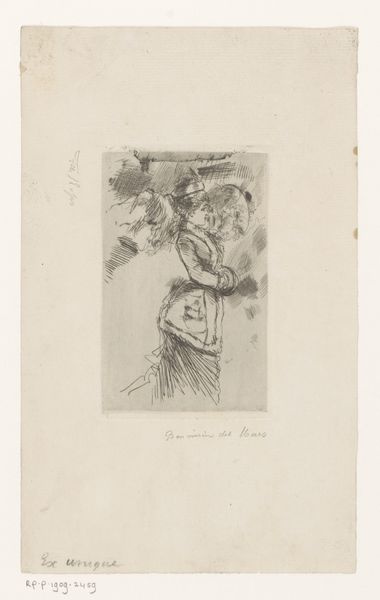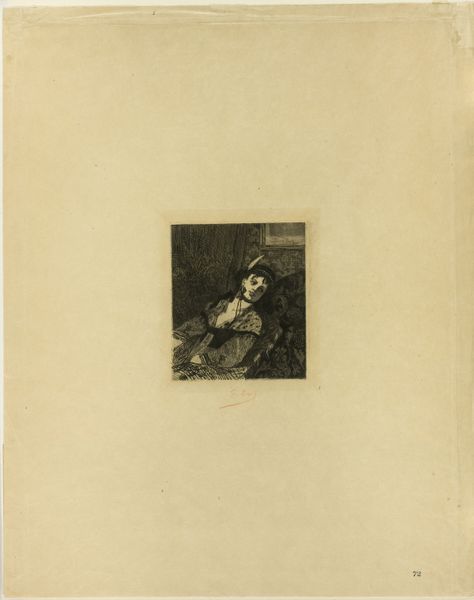
drawing, pencil
#
drawing
#
figuration
#
pencil
#
symbolism
#
nude
#
erotic-art
Dimensions: height 219 mm, width 169 mm
Copyright: Rijks Museum: Open Domain
Curator: Armand Rassenfosse, a Belgian artist linked to the Symbolist movement, rendered this pencil drawing in 1895. The piece is entitled "Salome met Javaans hoofddeksel en bloemen in haar handen," or "Salome with Javanese Headdress and Flowers in her Hands." Editor: My initial impression is one of delicacy and restraint. The ethereal rendering gives the figure a sense of otherworldliness. Curator: Indeed. Salome as a figure experienced a revival during the Symbolist era. Artists re-imagined the biblical femme fatale within contemporary cultural anxieties and obsessions concerning female power. Editor: Absolutely. The headdress points us eastward, calling up ideas about exoticism and desire. Her dance would have carried strong symbolism and sexual charges for audiences in Europe at the time. And is that a lotus flower she’s holding? That would surely act as a symbol of beauty and temptation. Curator: The inclusion of Javanese attire suggests a deliberate juxtaposition of Eastern mystique and Western fascination. This fusion speaks to European colonial encounters and the artistic appropriation that inevitably occurred. The pencil medium also reflects a conscious choice, emphasizing vulnerability and rawness rather than bold, assertive statements. Editor: I also find it striking how she is nude but somehow shielded from direct objectification. The ethereal pencil strokes combined with her pose make her feel simultaneously present and elusive, as though she is both inviting and resisting the gaze of the viewer. Curator: You touch upon an interesting point regarding visibility. This piece encourages discussions about gender, colonial power dynamics, and the artistic frameworks that shape these perceptions. Salome becomes a contested site upon which cultural anxieties play out in visual form. Editor: Looking at Rassenfosse's rendering, I wonder how the symbolism attached to figures like Salome evolves over time. I mean, what do these visual markers of temptation, eroticism, and "otherness" represent to a contemporary audience versus its original Victorian viewers? Curator: It underscores the complex interplay between artistic agency, cultural context, and individual reception when understanding these themes throughout history. Editor: Well said. A reminder of how art constantly negotiates between reflecting our histories and challenging us to reflect on their legacies.
Comments
No comments
Be the first to comment and join the conversation on the ultimate creative platform.
